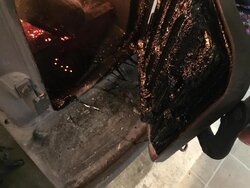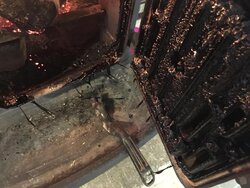I switched over to hot bricks in my clawfoot wood stove last year, as I am away a lot, and it's much easier for my wife to handle than an arm full of wood.
Last year I had a great experience, everything went well. This year I picked up a pallet and brought them home, and for the past week I've been burning left-over's from last year. Last night, however, I threw on some of the new stuff. It was noticeably different, the packaging, the size of the bricks, and the feel, even though it was the same company.
This morning I come down and open the stove, to toss a few more on before heading for the shower. When I opened the door, I was shocked to find tar stretching from the door to the stove like bubble gum. This is the first time I'd seen it like this.
Has anyone else experienced something like this with the bricks? Never had the issue before.


Last year I had a great experience, everything went well. This year I picked up a pallet and brought them home, and for the past week I've been burning left-over's from last year. Last night, however, I threw on some of the new stuff. It was noticeably different, the packaging, the size of the bricks, and the feel, even though it was the same company.
This morning I come down and open the stove, to toss a few more on before heading for the shower. When I opened the door, I was shocked to find tar stretching from the door to the stove like bubble gum. This is the first time I'd seen it like this.
Has anyone else experienced something like this with the bricks? Never had the issue before.



